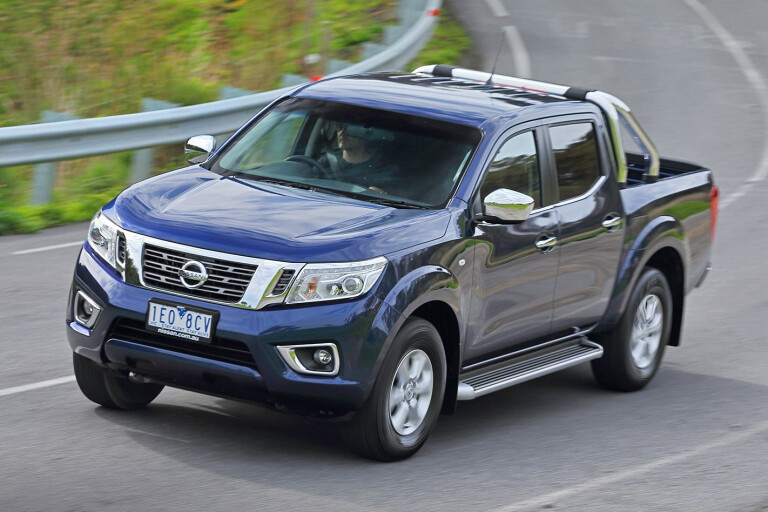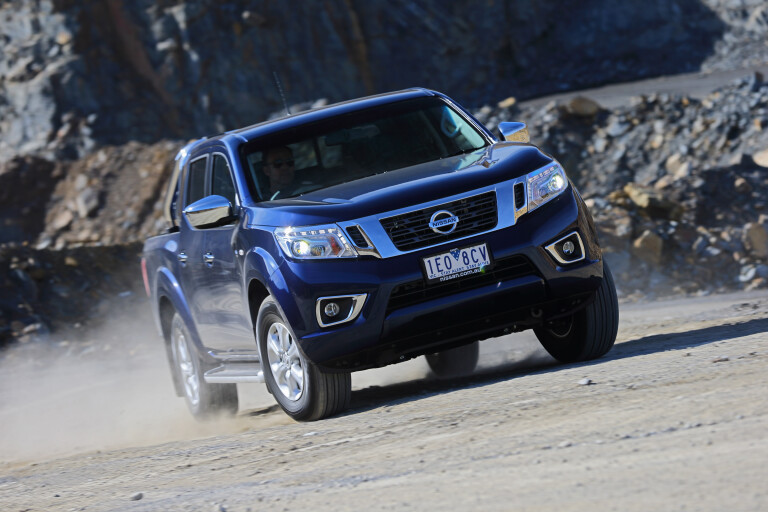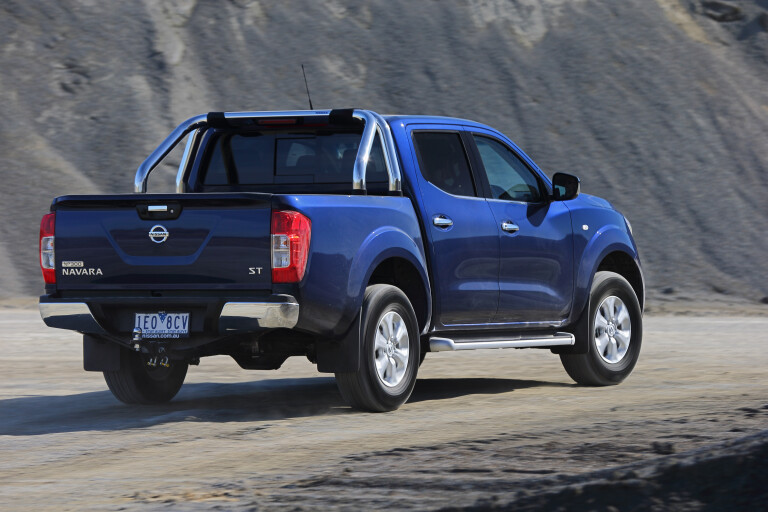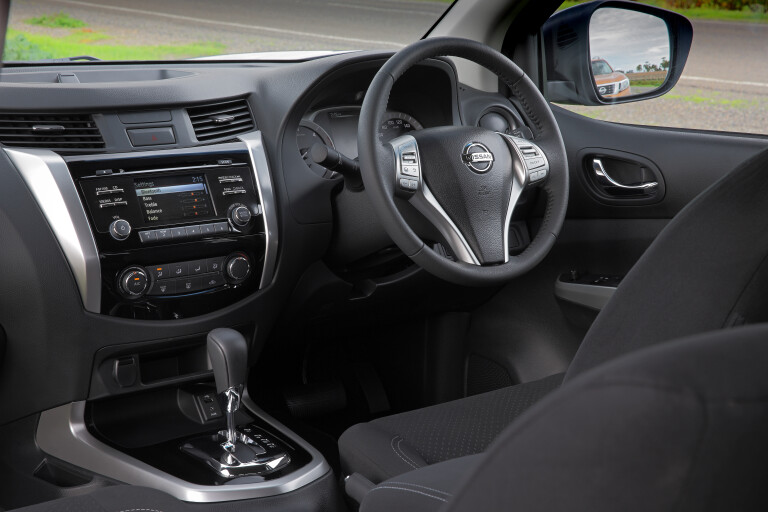
So, what is it?
If you’re often on the road early you’ll know all about it. Numerous sets of headlights ranging up in the mirrors, before flashes of PVC piping, multiple ladders and chequer-plate tool boxes blaze past on all sides. Welcome to the Tradie Grand Prix, where Australia’s hi-vis heroes let off a little pre-dawn steam.
Chariot of choice for this impromptu form of motorsport is Toyota’s all-conquering HiLux, with a new model recently hitting dealerships. In fact, after a lengthy fallow period, the light commercial market is suddenly exploding with fresh product. As well as the HiLux, Mitsubishi has coughed up with a new Triton, Ford’s updated the Ranger, and Nissan’s NP300 (D23) Navara has hit the TGP grid.
The Navara nameplate has been in the Aussie market for close to three decades, and this is the fourth distinct model to wear it. Representing around 30 per cent of Nissan’s local sales volume it’s a hugely important release, and like other recent arrivals, blurs the line between tool-of-trade and family truckster.
The Nissan Navara is offered across no less than 27 variants. Engine choice is between a 122kW/238Nm 2.5-litre petrol four (also used in X-Trail and Altima), and two versions of the same 2.3-litre diesel; one with a single turbo for 120kW/403Nm, and another with twin snails, delivering 140kW/450Nm.
Sadly, ever tightening global emissions regulations have put a stake through the heart of the out-going model’s Renault-sourced 170kW/550Nm 3.0-litre V6 turbodiesel.
After engine selection, specification grade (DX, RX, ST and ST-X), cab options (single, dual and king), body types (cab-chassis or ute), transmission choice (six-speed manual or seven-speed auto), and drive configuration (4x2 or 4x4) are the ingredients for the dizzying array of possible variations.

Why should I care?
The NP (Nissan Pick-Up) 300 Navara replaces a two-tier range, where the long-serving D22 model (introduced in 1997) covered the basic work truck end of the spectrum, and the D40 (launched in 2005) underpinned more premium offerings.
What’s new about it?
This time around the Navara has been designed to respond to increasing demand for a multi-purpose vehicle, retaining the strength and muscle of a pure commercial, and blending it with comfort and features more often found in a full-size SUV.
The boxed ladder chassis and front suspension set-up carry over from the D40, but the springs and dampers have been softened off, with dual cab pick-up models featuring a new five-link, coil spring rear end, in place of the standard leaf arrangement.

That’s all fine, what’s it like to drive fast?
Unfortunately, this is only half a review because the meat and potatoes leaf sprung dual cab-chassis, single cab, and king cab models hadn’t arrived in time for our road test. Add in the fact the petrol engine didn’t make it to the press launch and we’re a long way from getting to grips with the full line-up.
That said, the launch drive covered around 400km across open highway, dirt back-roads and rougher off-highway sections in the Gawler Ranges, around 600km north west of Adelaide on SA’s Eyre Peninsula. And we sampled manual and auto, rear and four-wheel drive, as well as both versions of the turbo diesel engine.
The single turbo diesel has plenty of grunt, and not surprisingly the twin-turbo has even more, with maximum torque on both units available from just 1,500rpm. Easy highway cruising and rapid overtaking are the norm, accompanied by a noticeable but acceptable amount of diesel clatter.
The manual ‘box demands long throws of its lengthy lever between ratios, but is smooth and positive overall. No surprise Nissan calls out the manual as the Navara customer’s preferred option. The auto is slick, with the extra ratio and a slightly higher final drive keeping the engine in its sweet spot for longer.
The ST runs on 16-inch alloys shod with 255/70 Toyo Open Country rubber, and coil springs at the rear deliver a closer to car quality ride, although bumps and thumps still make their presence felt. Body roll in even modestly enthusiastic cornering is pronounced, and steering quality isn’t great. With 3.7 turns from lock-to-lock, even gentle bends require a lot of steering input, road feel is lacking and precision is missing in action.
Younger readers may not know what we’re talking about in noting all Navara models run rear drum brakes, but stopping power is more than adequate none the less.

And driving home from the city?
The dual cab interior is impressive, with a clean and simple dash design including clearly calibrated instruments and a five-inch audio display screen on the ST, upgraded to a seven-inch infotainment touchscreen on the ST-X.
The front seats are supportive and comfortable over long distances, while those in the back are well catered for with generous leg room, acceptable headroom for lengthy adults, and civilised touches like individual air-con vents set into the rear of the front console, and fold-out cup-holders.
What about off-road?
The 4x4 Navara is a handy off-road performer, managing to efficiently iron out dirt road corrugations and potholes. And more serious crawling over genuinely rough terrain is helped by a wading depth of 450mm and a lateral tilt of 50 degrees. The shift-on-the-fly 4WD system also lets the driver switch between 2WD and 4WD (high range) with the twist of a dial, at speeds of up to 100km/h. Add in Active Brake Limited Slip (ABLS), Hill Start Assist (in ST-X 4x4) and Hill Descent Control and the work site obstacle course will be a breeze.
Anything bad about it?
The steering wheel doesn’t adjust for reach and the range for rake is limited, Annoying, and definitely not car-like. And storage around the cabin is passable rather than brilliant.

How much would I have to pay? And is it worth it?
Pricing for the dual cab range starts at $26,490 for the DX RWD petrol manual, and tops out at $54,490 for the ST-X 4WD diesel auto.
All models feature a lengthy list of standard features, the highlights for DX being electric door mirror adjustment, power windows with driver auto up/down, central door locking with anti-lock out, cruise control, multi-function trip computer, roof console with map lamp, sunglass holder, mood light and microphone, six speaker audio, Bluetooth, front & rear mud guards, and a full-size (steel) spare wheel.
The step up from DX to RX adds extra fruit including chrome door handles and mirrors, a rear power sliding window, remote keyless entry, carpet floors and an alarm system.
Then ST adds electric folding and heated door mirrors, auto dimming rear-view mirror, LED headlights and daytime running lights, front fog-lamps, premium steering wheel, gear shift and handbrake lever, ‘Advanced Drive-Assist Display, 5-inch audio display, NissanConnect smartphone connectivity, wide-body over fenders, side steps, diff lock, 16-inch alloys, a rear view camera and an alloy sports bar.
And the fruit-laden ST-X adds door mirror LED turning signals, ‘Intelligent Key’ (I-Key) and engine start button, leather-accented seats, power adjust driver seat with lumbar support, heated front seats, premium door trim, dual-zone auto climate-control, sat-nav with 7-inch touch screen display, Bluetooth audio streaming, tilt & slide electric sunroof, ‘Utili-Track’ load location system, 18-inch alloys, ‘Active Brake Limited Slip’ (4WD), ‘Hill Descent Control’ (4WD), ‘Hill Start Assist’ (4WD), rear parking sensors, a tub liner and carpet mats. Phew! Not bad.
Would you take the Nissan Navara ST or Ford Ranger XLS?
Ford has captured the work truck zeitgeist with its cool and capable Ranger. The new Toyota HiLux is making a strong case for itself as well…
Click here to read the full range review on the Nissan Navara.
COMMENTS